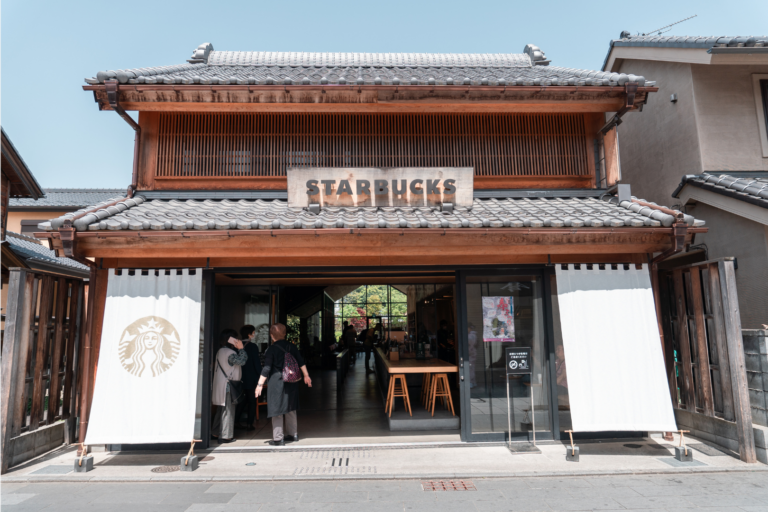Why Marketing Research is Essential in Understanding Japan’s Market

Image Credit: Alexander Zas
Japan is one of the worlds most unique consumer markets, know for its high standards, cultural intricacies, and its changing digital landscape. Many global brands enter Japan expecting to succeed using Western marketing strategies only to be surprised that they are struggling and failing to sell. The problem: a lack of proper marketing research.
If you are business that is looking to thrive in Japan, performing quality research is not an option, it is mandatory. Japan has unique consumer behaviors, cultural values, and different digital preferences. Understanding this not only helps you sell better, but builds on a core feature of Japanese business: trust and relationships.
This blog post will set out to explore why marketing is essential to successfully sell in Japan. I will highlight some of the core consumer behaviors, look at some cases studies of failures and success, and a simple practical guide for doing marketing research. Let’s dive in.
Why Japan’s Market is Different from the West
Distinct Customer Expectations
Japanese consumers are unique and their expectations are completely different from any country, and is something that you have to understand before you can even begin selling there. Japanese consumers expect high-quality products, top-tier customer service (Omotenashi), and transparency.
Western consumers tend to be more price-driven. While this is in some case still true in Japan, they prioritize quality and reliability. This is also backed by delivering good customer service to build a strong brand reputation. When people trust your brand they enter the minds of Japanese consumers who spread this information via word-of-mouth.
Transparency in pricing, product details, and review is also expected. Failure to be transparent and or be misleading will destroy your brand’s reputation, which in turn will ruin sales.
Buyer Behavior is Influenced by Culture
While as marketers we need research to understand our consumers, Japanese consumers do a lot of research to make purchases. Japanese consumers are generally risk-averse and tend to be brand loyal. Meaning once they trust you, they stay with you.
This is important to understand because Japanese culture is group-oriented and tends to make decisions as a group. As I mentioned before, this means that they tend to choose brands that have a good reputation. That reputation is developed through word-of-mouth, peer recommendations, and reviews, which also form the core of the research they do.
That means countries that try to build authentic relationships with their consumers, and avoid causing Meiwaku (inconvenience to others) is essential to survive in Japan.

Image Credit: Koukichi Takahashi
Aging Population and Changing Demographics
It is a well-known issue that Japan has a shrinking population that is largely elderly and aging rapidly. That means brands have to be flexible and unique to balance the large elderly population, but still be appealing to the younger audience.
Elderly populations tend to be more traditional and lean more into brands they trust and or have long-term relationships. This is true with younger audiences too, but they are more open to digital engagements and AI-powered marketing compared to older generations who still rely on traditional marketing channels.
Companies also feel the weight of changing demographics when it comes to limits in the available workforce. Many brands have shifted into using AI for things like customer service, concierges, and even utilizing it in cashier-less payment systems. There is also research on AI-powered robotic caregivers in the healthcare industry. In both cases, it seems like AI has seen success in Japan and should be leveraged.
Unique Digital Landscape
In the West, Google and Facebook platforms are essential aspects of the marketing ecosystem. For brands its also allows them to be flexible as they Google and Meta have there own advertising platforms. This gives brands the ability to shift tactics quickly to maximize profit.
In Japan, however the environment is different. Instead consumer prefer platforms like LINE, Rakuten, and Yahoo!Japan. As a result the marketing ecosystem revolves more around these platforms. In Japan building relationships is a lot more important in generating trust with consumers. Platforms like LINE especially allow consumers direct communication to the brand.
Brands that Failed Due to Poor Research
Airbnb: Neither Hotel or Housing
Airbnbs launched its Airbnb Experiences in 2016 aiming to bring Airbnb success to the world. When they entered Japan, it was extraordinarily successful, becoming the second fastest growing market for Airbnb. By 2018 they had 60,000 listings that customers could stay at.
Then on 2018 the government set out to crackdown on Airbnb launching legislation that forced Airbnb to remove 80% of its listings. This it was argued was due to non-compliance with Japanese regulations.
Airbnb either out of lack of research or sheer disregard, had a serious lack of understanding of just how strict Japanese housing laws and community norms were. Japan has very strict housing laws that require them to be registers with government, and prevent homes for being rented more that 180 days a year.
Airbnb also felt like it operated in a grey space where they weren’t a hotel service, and weren’t offering homes for rent. This allowed businesses who utilize Airbnb to circumvent regulations that both of these industries had, ultimately leading to the government crack down. These days Airbnb still exists but is far smaller due to the heavy regulations still in place.
Lesson: Understanding existing industry regulations, is crucial for foreign brands entering Japan, or for those looking to start a brand in Japan.

Image Credit: Weichao Deng
Uber: Facing the Taxi Leviathan
Uber entered the Japanese market in 2014 where it believed it can replicate its success in the West and shake up the transportation industry there. Unlike Airbnb who had success early on, Uber was a disaster from the beginning.
What’s important to know, is that the Taxi industry in Japan is very entrenched and has very strong political ties as well. The Taxi lobby is a powerful one that often influences decisions to favor it. Which important to note when we see what the challenges were.
One problem, was that the Uber driver model is illegal. In Japan, only licensed taxi drivers are allowed to provide transportation services. Uber naturally tried to fight back but failed due to the powerful lobby claiming Uber was unfair and unsafe.
Another was a lack of cultural understanding. In Japan, quality service is not a option, its a requirement. Unlike Uber that is more casual, laid back and unprofessional, traditional taxi drives have to follow strict etiquette manuals, wear white gloves, and open doors. I have even seen private business focused taxi companies provide lottery tickets to its guests.
Unfortunately, Uber failed to understand the taxi industry in Japan, the regulations behind it, and the cultural preferences of the Japanese consumer. It however did not make the same mistake with its Uber Eats platform. So, you’ll still see Uber around, just not the ride-sharing part of it.
Lesson: Understand existing industries, regulations, and consumer preferences before entering Japan or creating a brand in Japan.
Brands that Succeeded Due to Good Research

Starbucks: The Four Seasons
Starbucks did extensive consumer research when it entered into the Japanese market. It identified one of Japan’s core consumer cultural preferences, seasonal exclusivity.
In Japan, seasonality is a deep part of the Japanese culture, where it has long and deep historical ties to just about everything ranging from the arts to its festivals, local customs and of course purchasing decisions. Stores will reshuffle all of their stock upon the change of season, and its hard to find summer clothes during the winter for example, even on their online store.
Starbucks used this to create limited-time flavors, that reflect the season that they are in. A great example is the Sakura Frappuccino, which only comes out in Spring, or Sweet Potato sweets that only come out in Fall.
Not only that but it leverages insights by using social media as social listening tools to identify emerging flavor trends. The two best tools for this are LINE and X. On LINE you can speak directly to your consumers and get direct feedback from them. While, X lets you chime in on what groups of people are thinking about your product, or to learn what is trending.
The result is that Starbucks is the leader in the coffee market, with the most coffee shops in Japan out competing local brands like Donutor.
Nike: Minimalist Sportswear
Nike utilized a multi-layered data analytics approach to optimize the brand. This included analyzing consumer shopping habits, sales data, and social media trends, where it was able to successfully determine and even predict what products performed well.
What they learned is that consumers prefer subtle and low-key branding instead of large or repeating logos. They also preferred neutral color palettes, like blacks, whites, and grays and sold better than the bright, colorful, and flashier designs that Nike offered. Finally, they preferred lightweight and flexible shoes that they can use everyday instead of performance or bulkier shoes.
So what did they do with this information? They completely redesigned their shoe line and their brand specifically for the Japanese market. They changed shoe designs to be more minimalist in color and logo usage. They also leveraged this to collaborate with local street wear brands like Fragment Design, Undercover, and Sacai, the last one being particularly successful.
The result from localizing their brand was an increase of 25% in sales for its product line.
Easy Steps to Conduct Effective Market Research in Japan
1. Japanese Consumer Surveys & Data Platforms: Use platforms like LINE Research, Rakuten Insights, or Macromill who provide insights into Japanese. consumer behaviors. Rakuten for example uses AI-driven analytics to understand trends and optimize ad targeting.
2. Conduct Focus Groups & Interviews: Conducting qualitative research like focus groups and interviews can help you get a better understanding of customer sentiments to align with local and cultural preferences.
3. Analyze Competitors & Industry Leaders: Study Japanese competitors to identify, best practices, expectations, and pricing strategies. Often times brands enter Japan thinking they can use what I call the copy-paste method, where they can just do the same thing they did in the West and replicate the success there. Learn your industry and see what your competitors are doing.
4. Utilize Social Listening on Popular Japanese Platforms: LINE, X, and even Yahoo! Japan can provide real-time consumer analysis. LINE is great for gaining direct consumer sentiment. While X can be leveraged to get overall consumer sentiment and discussions around your brand.
I hope you learned why research is so important especially when entering the Japanese market. Many have failed for thinking we succeeded in all the Western countries, so we can succeed in Japan. Japan is a completely different landscape and the foreign brands that succeeded in Japan, adapted to succeed in Japan. You have to adapt too.
Follow me on social media and follow my newsletter to get the latest.